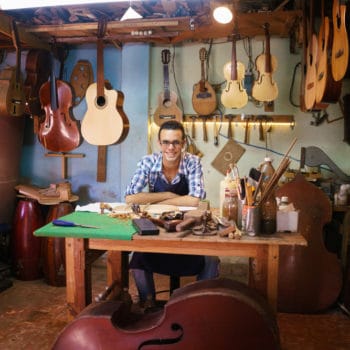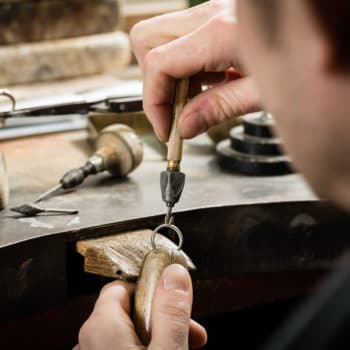Why We Love It
-
$56,990Potential Avg. Salary
-
7.6%Job Growth Rate
-
Growing DemandJob Outlook
-
Creativity FocusedCareer Attribute
Curators are responsible for managing exhibits and collections on display in art galleries and museums. A curator’s primary responsibility is to work with artists, other galleries and museums, and historical societies to borrow or purchase items that will appear in a facility’s rotating or permanent exhibits.
Recommended Schools
What is a Curator?
The following job responsibilities are common for individuals in curator roles:
- Work with artists, other galleries/museums, historical societies, and other organizations to purchase or borrow items to appear in a facility’s rotating or permanent collections
- Ensure items in a collection are properly cared for, stored, and transported
- Develop ideas for new collections and exhibits that will increase incoming visitors
- Manage museum/gallery staff and budget, and perform other administrative tasks
A Day in the Life
Curators work for art galleries, museums, historical societies, archival institutions, and other facilities where items are placed on display for public viewing and/or use. They are subject matter experts in their field as well as successful marketers that understand the types of items that will excite target audiences and encourage facility growth. Often, curators serve in a director capacity and are responsible for the overall success of the facility. The role is multi-faceted and requires the wearing of many hats.
The primary responsibility of a curator is finding items to display in rotating exhibits and permanent collections. Sometimes, this requires borrowing items from another facility or from the item’s individual owner. Other times, the facility purchases the item for itself to house in a permanent collection. The role requires curators to be effective negotiators as well as highly responsible. Often, they deal in one-of-a-kind items that cannot be replaced if lost, broken, or damaged, so great care is taken with all inventory.
Beyond curating items for collections and exhibits, curators may also be responsible for day-to-day administrative tasks. They often manage all facility staff—either directly or indirectly—and are responsible for ensuring that facilities are either profitable or making enough money to continue operations. They work with their teams to establish themes, ideas, and programs that will draw visitor interest, and may work with marketing and sales teams to set admission prices and establish marketing campaigns to raise awareness.
Typical Work Schedule
Most curator positions are full-time. Depending on the type of facility a curator works for, he/she may work normal business hours or may be required to work evening and weekend hours. Additionally, many curators spend a lot of time traveling to evaluate, acquire, and transport curated items.
Curator Specializations
- Art curators work for art galleries and art museums and are responsible for choosing artworks to display based on facility themes. Works curated may be from living artists, famous historical artists, or both.
- Museum curators are responsible for purchasing and/or borrowing items and artifacts to display in a museum’s permanent collection as well as rotating and special exhibits.
- Archivists are responsible for curating historical items or documents that can be used in research. They oversee public use of their archives and ensure items are cared for properly.
- Zoo, aquarium, botanical garden, and nature center curators are responsible for curating animals, plants, and wildlife to display at their facilities.
Typical Employers
The majority of curators work for museums, art galleries, zoos, aquariums, botanical gardens, historical societies, and archival institutions.
Recommended Schools
How To Become a Curator
Working as a curator requires a bachelor’s degree at a minimum, and most positions also require a master’s degree. The degree pursued will depend on the area of curation where you’d like to focus. For example, art curators generally have bachelor’s degrees in fine arts or art history. Zoo curators, on the other hand, generally pursue animal science, biology, or zoology degrees. It’s also possible to become a curator with a general degree in a subject like business with enough relevant experience.
After earning a bachelor’s degree, most aspiring curators then go on to earn a master’s degree in a related field. Again, the area of focus for a master’s degree will be dependent on the type of institution you want to work for. Archivists often have master’s degrees in library sciences, archival sciences, or history. Museum curators may have master’s degrees in science, history, art history, or museum sciences. Again, a master’s in business administration could also suffice with relevant experience.
With the proper degrees in hand, becoming a curator is often a matter of gaining relevant experience. Some people gain experience by volunteering for the institutions they’re interested in working for. Some take entry-level positions working at sales counters and work their way up the ladder. Others begin their careers working in the field. For example, many art curators are artists. A good first step may be to interview current curators to find out how they earned their positions and get ideas on how to target your education and career steps to be the most marketable to employers when applying for roles.
Curator Salary Data
We’ve provided you the following to learn more about this career. The salary and growth data on this page comes from recently published Bureau of Labor Statistics data while the recommendations and editorial content are based on our research.
National Anual Salary
Low Range
$37,740Average
$56,990High Range
$91,710National Hourly Wage
Low Range
$18/hrAverage
$27/hrHigh Range
$44/hrHow do Curator salaries stack up to other jobs across the country? Based on the latest jobs data nationwide, Curator's can make an average annual salary of $56,990, or $27 per hour. On the lower end, they can make $37,740 or $18 per hour, perhaps when just starting out or based on the state you live in.
Salary Rankings And Facts
#303 Nationally for All Careers
Above Average Salary Nationally
Programs and Degrees
Here are the most common degrees for becoming a Curator. a is usually recommended and specifically a degree or coursework that prepares you for the particular field, see below.
Highest Education Among Curators
- 8.7% Doctorate
- 40% Masters
- 35% Bachelors
- 2.9% Associates
- 8.6% College
- 4.2% High School
- 0.6% Less than High School
Job Growth Projections and Forecast
2014 Total Jobs
13,1002024 Est. Jobs
14,100Job Growth Rate
7.6%Est. New Jobs
1,000How does Curator job growth stack up to other jobs across the country? By 2024, there will be a change of 1,000 jobs for a total of 14,100 people employed in the career nationwide. This is a 7.6% change in growth over the next ten years, giving the career a growth rate nationwide of Above Average.
Growth Rankings And Facts
#293 Nationally for All Careers
Above Avg. Growth Nationally
What Companies Employ The Most Curators
| Industry | Current Jobs | New Jobs Needed | % Increase |
|---|---|---|---|
| Museums, historical sites, and similar institutions | 6,000 | 600 | 1% |
| Colleges, universities, and professional schools; private | 1,300 | 200 | 0% |
| Self-employed workers | 1,100 | 100 | 0% |

















